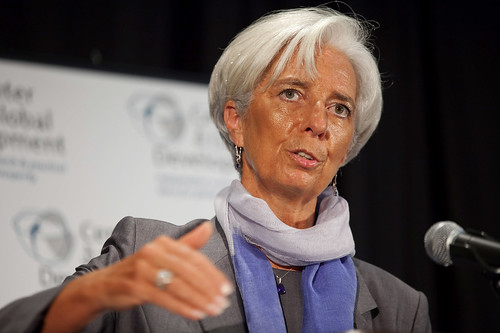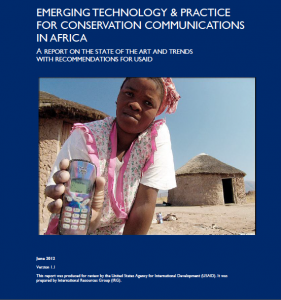
Christine Lagarde, Managing Director of the IMF. Photo credit: International Monetary Fund
On Tuesday, June 12, 2012, Christine Lagarde, Managing Director of the International Monetary Fund (IMF), presented a speech at the Center for Global Development in Washington D.C. entitled “Back to Rio, the Road to a Sustainable Economic Future”.
Mrs. Lagarde spoke of a “triple crisis”, comprised of economic, environmental and social factors, stressing her belief that none of the issues could be improved in isolation from one another. In order to address these problems, she called for a different type of economic growth that would use a variety of fiscal and monetary policies to address the environmental and social issues simultaneously. Fiscal policies mentioned included cap and trade schemes on carbon emissions, and various environmental taxes. In regards to how the IMF can assist in this matter, Mrs. Lagarde stated that the organization can help set prices and fill infrastructure gaps with clean energies to help increase economic growth. With the ability to lend to the developing world, she stressed, “Now the IMF needs more resources for concessional lending, to help vulnerable countries navigate an increasingly volatile world. This is one of my top priorities.”
Mrs. Lagarde also highlighted the dual effects of environmentally-sensitive fiscal policy, to reduce environmental damage while generating tax revenue for the economy. Illustrating this point, she stated, “Right now, less than 10 percent of worldwide greenhouse gas emissions are covered by formal pricing programs. Only a handful of cities charge for the use of gridlocked roads. Farmers in rich countries are undercharged—if charged at all—for increasingly scarce water resources.” Mrs. Lagarde also mentioned that the IMF currently involved in natural resource accounting, along with the United Nations and the World Bank, to monitor the stock and use of natural resources such as land, water, and subsoil assets.
Mrs. Legarde brought attention to the need for social safety nets, particularly in developing countries, where she feels people are the most vulnerable to environmental consequences. Furthermore, she reminded the audience that the hardest-hit populations are usually those who contribute the least to the economic and environmental crises. In an effort to help relieve the stress, she cited the IMF’s effort to replenish the poverty reduction fund and provide resources to those countries in need. She also called for governments to move away from subsidy regimes that do not account for income disparities between different populations.
Following Mrs. Lagarde’s speech, a Questions and Answer session was led by Nancy Birsdall, President of the Center for Global Development. An important topic of discussion was how the global community can best take a green measurement of GDP. Mrs. Lagarde emphasized that the way in which we measure, determines the way in which we think; so while it may not become a mainstream measurement of growth, some type of value or index is crucial in order to compare and address the cost of natural resources, the value of goods, etc. She also mentioned that this is something the Department of Statistics at the IMF is currently working on with the Organization for Economic Cooperation and Development (OECD).
In preparation of the Rio+20 Summit, United Nations Conference on Sustainable Development, Mrs. Lagarde outlined a variety of important issues for attendees to take into account. The conference took place this week in Brazil, marking the 20th anniversary of the 1992 United Nations Conference on Environment and Development (UNCED), in Rio de Janeiro.










































